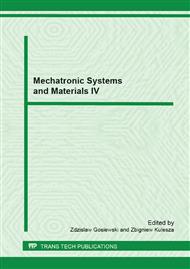p.220
p.226
p.232
p.238
p.243
p.248
p.254
p.260
p.266
Testing Some Alpha-Models of Turbulence on Wing Profiles
Abstract:
In this paper some numerical simulations of the Navier-Stokes Equations (NSE) to test the novel NS-α and NS-ω turbulence models [1, , which conserve energy, enstrophy, and helicity, are presented. These algorithms verify more conservation properties than other implementations of the NSE, however their rotational form [ makes the scaling study of the coupling between the velocity and pressure errors with respect to the Reynolds number, a very interesting research line. Nowadays we are designing a wing profile in the context of Unmanned Aerial Vehicle (UAV) on incompressible flow conditions [. First a genetic algorithm (GA) is used to obtain the optimized design geometry and then the NS-α and NS-ω turbulence models are run to study its performance for different attack angles. The GA objective function evaluates the general potential theory of each wing section considered, because that requires less computational cost than the alternative of solving the NSE, and a wing design method proposed in [ is applied. Thus the optimized design geometry was found by evaluating the potential flow of all candidate solutions generated from the selection, crossover and mutation operators in each GA iteration. It takes the order of hundreds of simulations per iteration to evaluate all candidate solutions. Summarizing, two practical applications for a UAV are presented: the optimized design of an airfoil for environmental purposes, named CEANI airfoil, and the application of relevant turbulence models as NS-α and NS-ω in order to evaluate with accuracy the lift, drag and maximum angle of attack.
Info:
Periodical:
Pages:
243-247
Citation:
Online since:
March 2013
Price:
Сopyright:
© 2013 Trans Tech Publications Ltd. All Rights Reserved
Share:
Citation:


